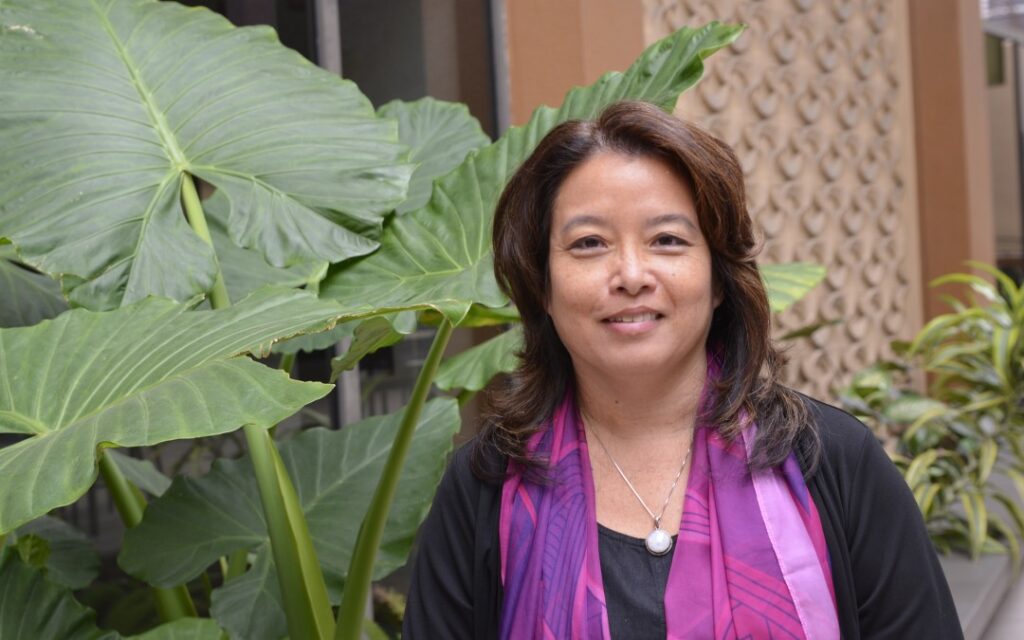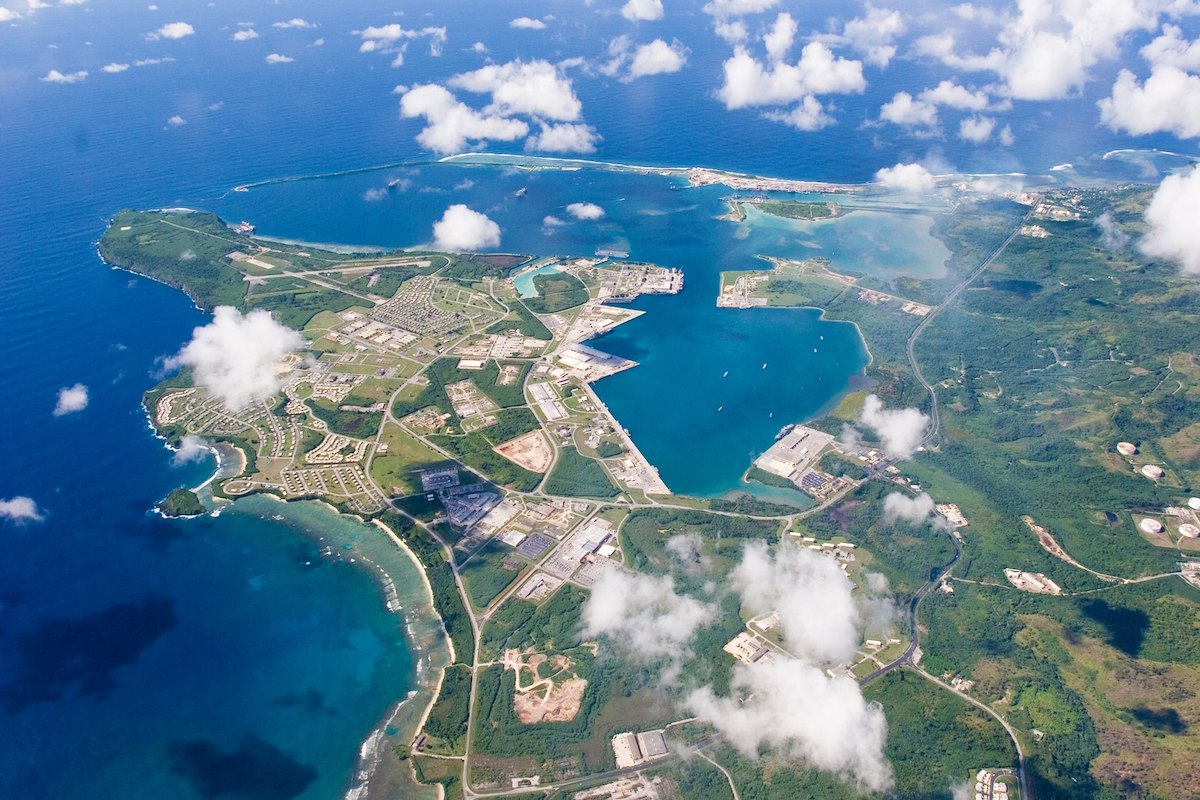Residents of the Pacific Islands –some 2.3 million people stretching from Easter Island and Hawaii in the west to Fiji, Tonga and the Solomon Islands in the east – find themselves in the eye of not just one, but two geopolitical hurricanes: climate change and rising tensions between the US and China.
Yet much of the public discourse around these two issues is dominated by larger powers, namely the US and China. For Dr. Mary Therese Hattori, director of the Pacific Islands Development Program, part of the non-profit East-West Center in Honolulu, Hawai’i, that dynamic overshadows critical perspectives from communities on the front lines of what are arguably the most pressing issues now confronting the planet.
She spoke with EMS’s Julian Do about how Pacific Islanders see the emerging US-China rivalry and why for many, climate change is seen as the more existential and immediate threat.
Can you talk a bit about your own background and your work with the Pacific Islander Development Program (PIDP)?
I was born to a Japanese-American father from Hawaii and a CHamoru mother from Guam. (The CHamoru are the indigenous peoples of the Marianna Islands of which Guam is a part.) Growing up in Guam, CHamoru culture has always been a part of my life and I have always identified as CHamoru.
These are my own perspectives shaped not only by my life as a CHamoru of Guam, but by my work as Director of the Pacific Islands Development Program, which is also Secretariat of the Pacific Islands Conference of Leaders that includes heads of 20 governments of Pacific islands, including independent Pacific nations, US territories and the state of Hawai’i. PIDP is also a founding member of the Council of Regional Organizations in the Pacific (CROP) whose permanent chair is the Pacific Islands Forum Secretariat (PIFS).
For many Americans the Pacific Islands are far removed from their day-to-day despite growing social, economic and military links. Can you describe what some of these are?

The Pacific Islands are currently hosting more than 400 US military bases to not only counter China and N. Korea but also to maintain regional stability and protect shipping routes. About 80% of world trade is transported by sea and of this volume, 60% of maritime trade passes through the Indo-Pacific region.
Environmentally, climate change poses an existential threat to the Pacific region and the U.S. has states, territories and part of the continent situated in the Pacific Ocean; U.S. households enjoy food and other products from the Pacific Ocean. Sea level rise, coastal soil erosion, and extreme drought are some of the more extreme issues affecting Pacific territories and nations alike. Our existence is intertwined, and our ecosystem is one and the same.
From a relational perspective, as more Pacific Islanders immigrate to mainland America, they become neighbors, fellow military servicemen and women, teachers, and nurses. At a personal level, this is extremely important.
Guam is home to a sizable US military presence and is geographically situated halfway between China and the US. What does that rivalry look like from your vantage?
In Western cultures, including America, relationships – especially at the geopolitical level – are transactional and based on tangible, mutual benefits like trade and security.
For Pacific Islanders, we generally place a high value on personal, face-to-face relationships. And once established, those relationships are for the long term.
Right now, rising tensions between the US and China are undermining these states’ transactional relationship. But for us, we want to maintain the personal relationships with the Chinese people and with all others, that have been developed over centuries. As leaders often say, we seek to be friends to all, enemies to none. We do not prioritize competition, we value relationships.
And yet people of the region have in recent history been forced to choose one side or another in great power conflicts, correct?
For thousands of years, Pacific Islanders lived in harmony with nature. Our homes were spread across the more than 30,000 beautiful islands of the Pacific Ocean, which covers 1/3 of earth’s surface. That changed with the arrival of European powers, namely the UK, Spain, and France in the 17th century. Colonization typically leads to decreasing self-sufficiency and self-rule and increasing dependency on colonial powers.
In modern times, since most islands have either become territories, dependent nations or small sovereignties, our fates have been tied to the shifting global order. During WWII, the Pacific Island region was a battlefield between Western powers led by the US and Japan.
Today, ever since the Cold War, many Pacific Islands – particularly US territories like Guam and the nations with Compacts of Free Association with the US (Palau, Marshall Islands and Federated States of Micronesia) – have seen a rapid expansion of American military bases which in turn have turned the host states into targets.
However, there is currently renewed interest in restoring some semblance of self-sufficiency and self-rule by moving away from the territorial incorporation doctrine, which is still used to perpetuate the second-class treatment of Americans living in the territories, from the denial of citizenship, to the denial of voting rights, and to the denial of equality in Federal benefits programs.
In fact, the UN Special Rapporteur on Minority Issues, in a 2021 report on U.S. Underrepresented Peoples and Territories, expressed two concerns: (1) the denial of the right to self-determination of the indigenous CHamoru people of Guam and (2) absence of adequate consultation around military buildup and associated impacts on cultural and environmental resources. Guam remains one of the few non-self-governing territories in the United Nations decolonization agenda.
How are Pacific Islander communities being impacted by that experience?
In America’s schools, there are drills for earthquakes, hurricanes, and active shooters. In Guam, our children have missile drills because we are within missile range of China and N. Korea. Think about how this looming threat might impact or traumatize generations of islanders who feel vulnerable and not protected. The noted scholar of Pacific Islander history Dr. Kenneth Gofican Kuper has said, “Guam seems to have a tattoo for a target on its back, inked into the island’s skin by its political status and geography. We may be the tip of the spear for both China and the U.S.”
Meanwhile, sea levels are rising, the planet is warming, and nations seem unable or unwilling to take serious steps to address the challenge. What is the message on climate from Pacific Islanders?
We see climate change as the greater threat than any military conflict. Rising sea-level has erased a number of islands off the map already and is threatening many others. Ironically, although surrounded by a vast ocean, many islands are facing drinking water scarcity due to severe droughts. Global warming is affecting the Pacific Ocean’s marine life and coral reefs. Water pollution caused by nuclear, industrial and chemical waste is also a major problem. We’re on the frontline of these catastrophes, and we have been appealing to international bodies and industrialized nations to adopt climate change accords to save our future, because all of us share this planet together.




